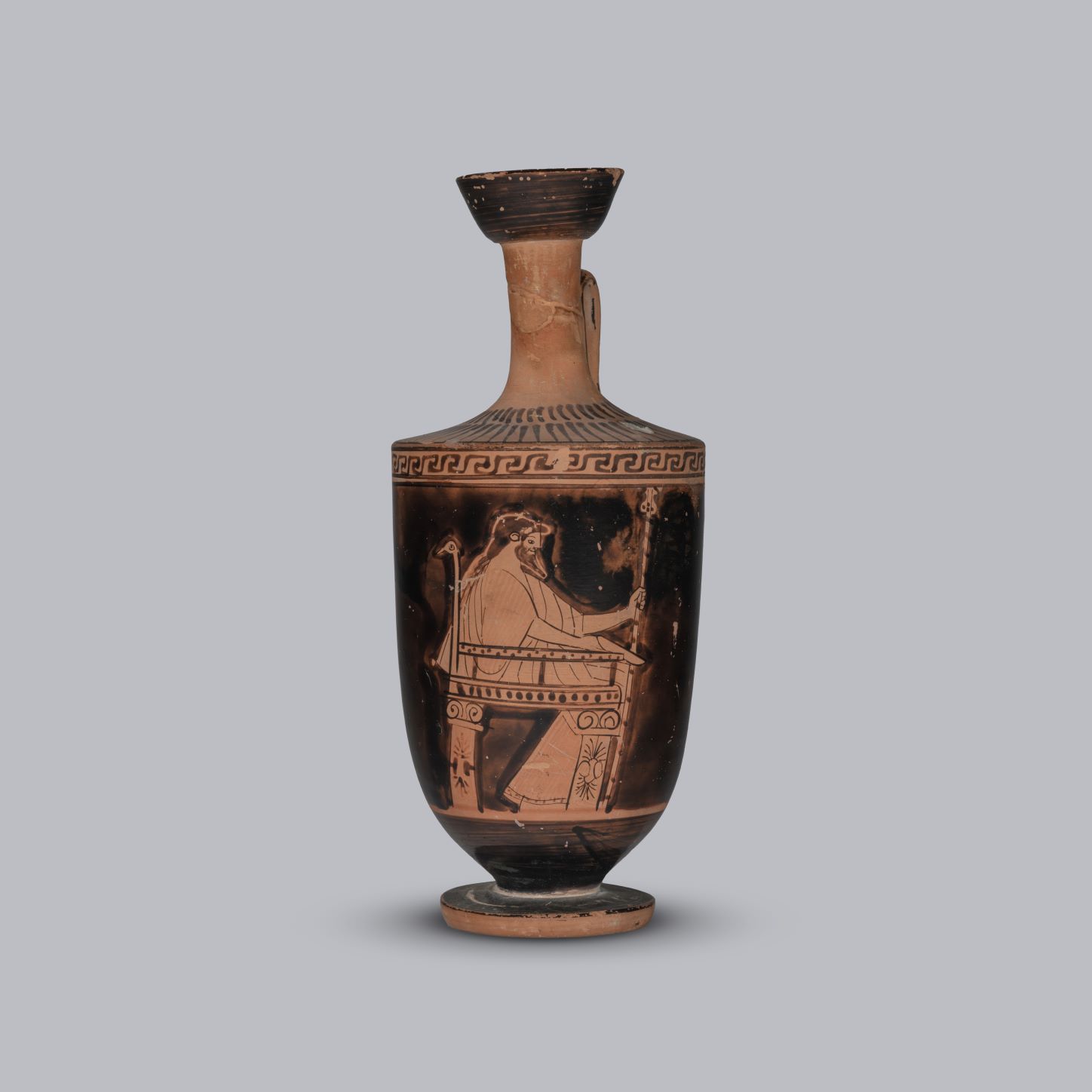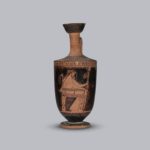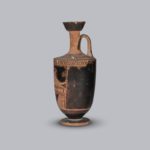
Lekythos [Gr123]
Athenian Red-Figure, by the Icarus Painter, 475-450 BC
Painted terracotta
A bearded male figure seated on a throne. He wears a wreath, chiton and himation. In his left hand he holds a sceptre, and in his right a phiale (libation bowl) tilted downwards. The throne is decorated with palmettes and volutes on the legs, the back rest ending in a bird’s head. A meander above, rays on the shoulder and below the neck.
The figure is marked out as important by his wreath and sceptre, and the elaborate throne on which he sits. Although he cannot be identified with absolute certainty, he is surely Zeus, who appears quite frequently in libation scenes on Attic vases (about 60 examples are known). In his article on this vase, Karim Arafat suggests that it may have been paired with another, showing the figure to whom Zeus was pouring his libation, or from whom was receiving one.
About 90 vases are attributed to the Icarus Painter, whose work provides an example of a high degree of specialisation in Attic vase decoration. Almost all of his vases are lekythoi and depict a single figure, usually a goddess. The figure on the Winchester vase is one of the painter’s best, with particularly effective use of dilute glaze for the folds of the himation over the right arm.
Literature: The Telegraph, 18 October 2021; Hampshire Chronicle, 13 October 2021; J. Falconer, ‘Greek Vases’, The Trusty Servant, no. 88 (May 1999), pp. 7-8; K.W. Arafat, ‘Iris or Nike? A Divine Libation Scene on a Missing Lekythos’, Bulletin of the Institute of Classical Studies, vol. 33 (1986), pp. 127-33; J.D. Beazley, Attic Red-Figure Painters, 2nd edn (Oxford, 1963), p. 697.13; Winchester College Memorial Buildings: Department of Classical Art (Winchester, 1909), p. 21 (no. 64)
Provenance: From Athens, at Winchester College by 1909, stolen from Winchester c. 1965; returned in September 2021

